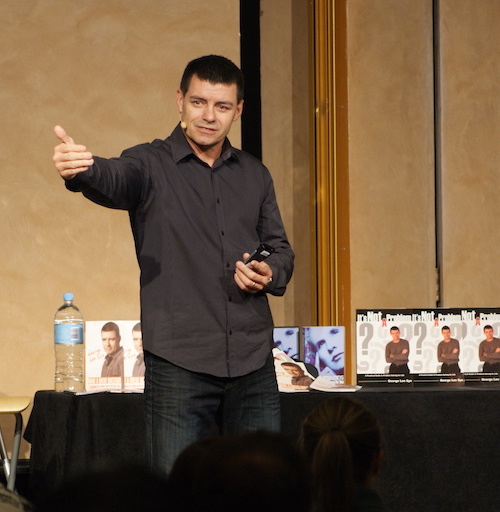Riding a motorcycle fast isn’t for everyone. However … there are important skills a highly competent motorcycle rider possesses if they are to minimise the risks of falling off at speed.
Interestingly, as a business mentor who spends one week each month coaching on track with the California Superbike School, I’ve realised that many of these skills and thinking patterns relate strongly to high performance in business and one’s career development.
Here’s a short rundown of a few of those.
#1 MAINTAINING A WIDE VIEW
Awareness of what’s around us on the track, that isn’t directly in the centre of our vision and conscious attention is fundamental in being able to accurately and safely navigate around a racetrack at speed.
Consciously aware of where the apex in a corner is before looking away from the turn in point, looking to the apex of a corner and still being able to turn exactly on one’s chosen turn in point, awareness of other riders on the track and what they are doing without actually looking at them … all necessary to ride at speed safely.
High performance people also possess an awareness of things beyond the centre of their vision and their mental focal point.
They recognise that a ‘wider view’ than the obvious is necessary if one is to be able to sell, negotiate, teach, influence and have solid relationships with people.
Two examples of this wider view that relates to what goes through my head and what I consciously take notice of are these.
(a) Presenting the pros of one’s point of view and at the same time recognising there are cons as well as an alternative point of view – this is the basis for a meaningful conversation and negotiation
(b) Focusing on delivering the content of one’s message and at the same time being able to take in the verbal and non-verbal cues that tell us how an audience is thinking and processing information at any given time – this is the foundation for effectively adapting one’s communication on the spot
#2 USING REFERENCE POINTS
A competent rider identifies reference points along the entire track so they have information at the right times and locations about actions they need to take … braking, turning, rolling off the throttle, rolling the throttle on, apexes and exit points to name a few.
High performance employees also have reference points that guide their actions through their career journey … milestones, results, outcomes, goals and targets.
Knowing what these are and what to do when they are reached is paramount to continual improvement and progress.
#3 WORKING FROM A STABLE PLATFORM
Educated riders quickly learn that the element that creates the most instability on a bike is the rider. And when the bike is unstable, it’s difficult and dangerous to go fast.
The smart riders goal is to work from a stable platform and then add speed through better executed and timed control actions.
Continual change, states of constant flux and too many change initiatives in business cause anxiety, instability and dissatisfaction at the operator level. Just ask people and you’ll know this is true.
Higher performance in business can be achieved and sustained more effectively when we recognise that change can happen quickly when it take place on a stable platform.
When we consolidate performance and stabilise processes occasionally, we can then get the right data to make even more progressive change.
When employees come to work from a stable home life, they are more likely to be relaxed with change.
‘Continually’ changing from a place of stability is good, while ‘continuously’ changing can be a nightmare.
#4 ROLLED ON ACCELERATION
A fast rider knows that they do not go from zero throttle to full in a made rush, they ‘roll on’ the throttle smoothly and cause acceleration to occur in as stable a way as possible.
Cracking the throttle full on causes traction loss and is mostly slower in the long run.
Trying to change everything overnight in a business can more often than not cause more harm than good and result in unsustained change.
High performers recognise that to lead sustainable change they must approach is as something of an evolution, not a revolution.
The up front work in getting stakeholders on board and addressing concerns and reasons why change is necessary means the take up of change will ultimately occur faster and stick over time.
#5 FEEDBACK AND COACHING
None of us, with a few exceptions perhaps, are born with the skill to ride a motorcycle fast.
It is a learned skill where the best of the best get coached, drill the necessary skills until they are perfected, and approach the task from a never ending self improvement perspective.
The same applies to career success … good coaching accelerates learning and avoids the slower discovery and reinvention method of self improvement.
So my advice to all is to get yourself a good mentor and coach and never think you no longer need to learn.
Here's to your success!
"In times of change learners inherit the earth; while the learned find themselves beautifully equipped to deal with a world that no longer exists."
Eric Hoffer (Social and Political Philosophy Writer)
Huge thanks to Steve Duggan at SDPics Photography for the images of George riding with CSS at Phillip Island GP Circuit.



